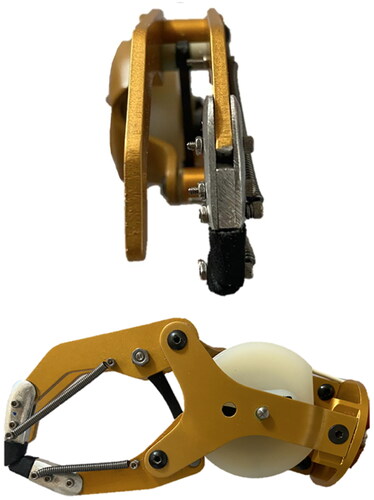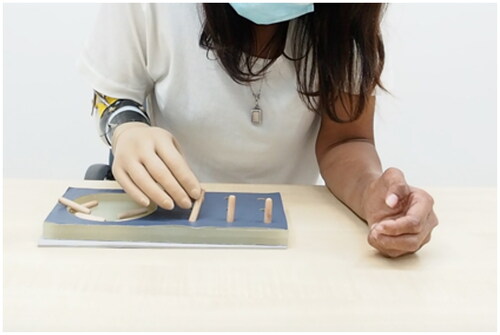Figures & data
Table 1. Participant demographics.
Figure 1. Images illustrating completed steps of the fabrication process for the IPJ-Hand.
A voluntary opening prosthetic hand is sourced and fabrication begins by cutting off at the estimated mechanical interphalangeal joint locations of approximately 1.27 cm of the index and thumb fingers (). These pieces are not to be discarded as they will now serve as a template for creating six aluminum alloy extension pieces (). The exact contours of these extensions should follow that of the hands remaining fingers. This step is part art and requires only that the dimensions of each piece be a length of approximately 21 mm, a width of 10 mm and a height of 1.5 mm. Next, a series of 0.3 mm holes must be punched into the extension bars which serve as a means for attachment back onto the hand. Three bolts along with nuts are required so that the extensions can be pieced together back onto the hand. The dimension of the bolt was chosen so as to permit the hook of the springs to easily catch onto the bolts (). Orange arrows designate pieces which need to be cut and used to assemble the interphalangeal joint.
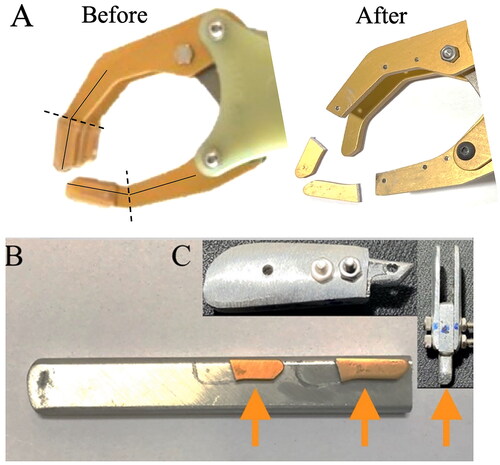
Figure 4. Image of a participant performing task four of the Brief Activity Measure for Upper Limb Amputees (BAM-ULA).
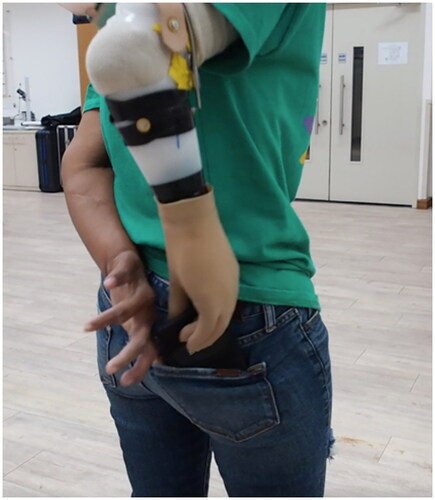
Figure 5. Box and whisker plots for Nine-Hole Peg Test (NHPT) in eight participants wearing prosthetic hands. Note: *: P < 0.05: the result of Paired Wilcoxon signed-rank test with Bonferroni correction after a Friedman’s χ2 r-test; IPJ-Hand: interphalangeal joint hand. Center lines show median and interquartile ranges. A longer duration indicates worse dexterity and a shorter duration better dexterity.
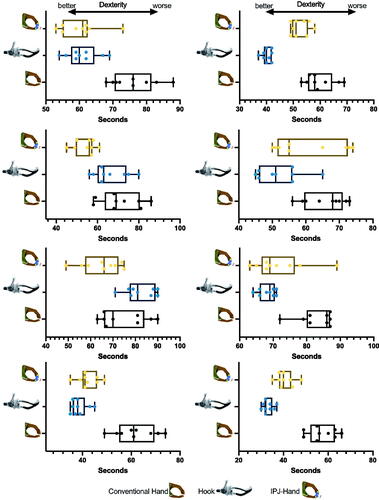
Figure 6. Box and whisker plots for Nine-Hole Peg Test (NHPT) in three prosthetic hands. Note: IPJ-Hand: interphalangeal joint hand; CH: Conventional hand. Center lines show median and interquartile ranges. A longer duration indicates worse dexterity and a shorter duration better dexterity.

Figure 7. Box and whisker plots for QUEST in three prosthetic hands. Note: QUEST: Quebec User Evaluation of Satisfaction with Assistive Technology; IPJ-Hand: interphalangeal joint hand; CH: Conventional hand. Center lines show median and interquartile ranges. longer duration indicates worse dexterity and shorter duration better dexterity.
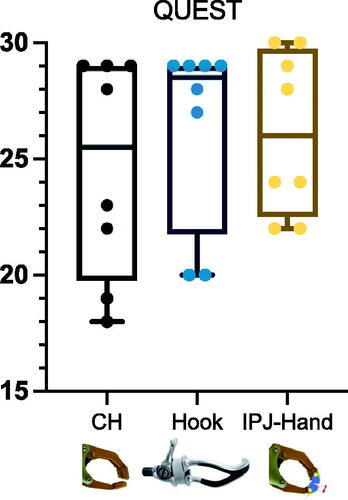
Data availability statement
The data that support the findings of this study are available from the corresponding author, K.S., upon reasonable request.

